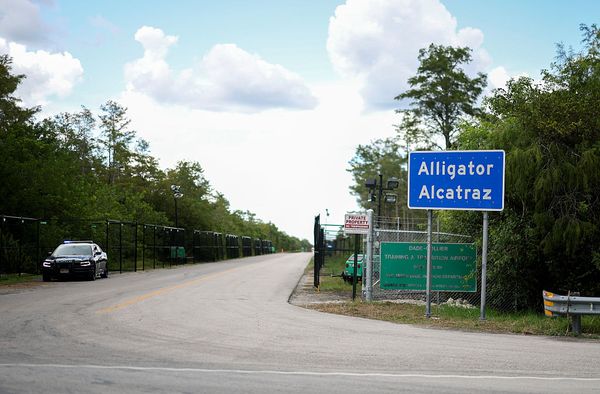The U.S. has become a major beneficiary of foreign investment in the last few years. It's a wave the Trump administration is looking to ride further — if some of the internal contradictions of its strategy don't trip things up.
The big picture: There's a simple mental model of what foreign direct investment (FDI) looks like: A big, multinational company in the U.S. or Europe builds a factory somewhere labor is cheaper. But that story is outdated, according to new research from McKinsey.
- Rather, growth in FDI is coming from innovative industries in one advanced country building out capacity in another advanced country, most often the U.S.
- Instead of modest factories churning out routine consumer goods, foreign investment activity is increasingly comprised of expansive facilities costing more than $1 billion that make cutting-edge products, including semiconductors.
- The Trump administration seeks to build on those gains, demanding foreign investment as a component of trade deals — though that pursuit is in tension with restrictionist immigration policy and the desire to reduce the trade deficit.
By the numbers: An analysis of 200,000 FDI projects announced over the last decade showed the value of investment inflows to the U.S. and Canada was 89% higher since 2022 than in the 2015-to-2019 period — mostly from other rich countries.
- Over the same time horizon, FDI in emerging markets in Asia fell 11%, and China went from being a net recipient of foreign investment to being an investor around the world, including in Europe, Latin America, and the Middle East.
- The patterns in the McKinsey Global Institute research are consistent with Federal Reserve data that shows the value of foreign investment in the U.S. reaching $16.9 trillion this year, more than triple the 2015 level.
What they're saying: "While most advanced economies have experienced growing inflows of announced FDI, the United States stands out," write the report's authors.
- "Its announced annual inflows have roughly doubled compared with the prepandemic period, and amounts going to future-shaping industries have increased by even more," with Japan, South Korea and Taiwan being major contributors.
Reality check: That investment surge coincided with Biden-era industrial policy meant to encourage development of semiconductors, batteries and electric vehicles. The Trump administration is pursuing different strategies.
- It has demanded in trade talks that Japan, South Korea and others establish funds in the hundreds of billions for investment in the U.S., subject to control by President Trump himself.
- Volatile U.S. trade policy is an X factor for multinationals considering major investments.
- Immigration policy could be a headwind. A raid on a Hyundai plant in Georgia, which led to 317 South Koreans being arrested on alleged immigration violations, has soured an agreement for a $350 billion investment fund.
- This week's imposition of a $100,000 fee for H-1B visas could make it expensive for companies investing in the U.S. to bring over homegrown engineering talent.
Between the lines: Outsized foreign investment projects that are announced come to fruition more than half the time, McKinsey partner Olivia White tells Axios, "but it doesn't always."
- "Transfer of knowledge and skills, and meaningful subsequent domestic investment are key," she adds.
Of note: In international economics, capital inflows like FDI are the inverse of current account deficits.
- Translation: If more investment floods into the U.S., it will likely translate into wider trade deficits, not the narrower ones Trump seeks.







